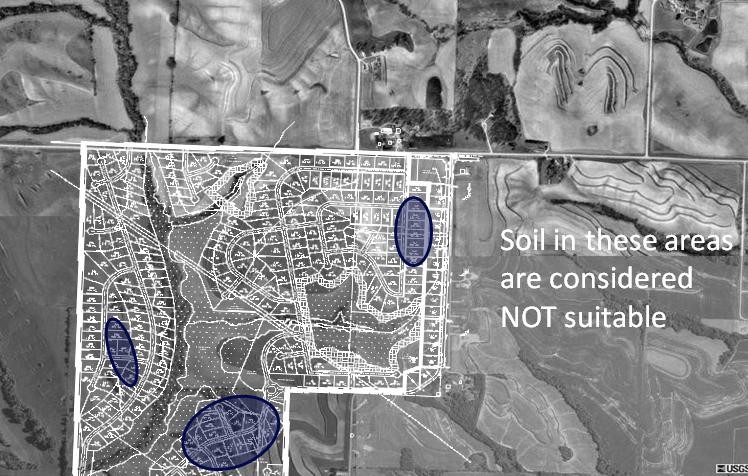On June 8, 2011, the Alberta Land-use Knowledge Network held a workshop on Wicked Problems in Natural Resources and Land-use.
One of the sessions was Rural Subdivision Wastewater Treatment as a Wicked Problem. The session panelists were:
- David Hill, Executive Director, Water Resources, Alberta Innovates, Energy and Environmental Solutions
- Alf Durnie, Administrator, Private Sewage Systems, Alberta Municipal Affairs
- Bill Irvine, Fossil Water, Calgary
Each panelist was asked to address:
- What we know
- What we don’t know
- What we need to make better decisions
Here is the summary of their comments on rural subdivision wastewater treatment.
What We Know:
- Rural acreages and subdivisions typically are developed in landscapes with poor agricultural soils (poor drainage, excessive drainage, coarse textured soils, glacial till soils with restricted internal drainage, undulating to rolling landscapes). These soils also pose problems for wastewater treatment systems particularly if the systems use soil and soil-based organisms for treatment.
- Septic field systems are the default solution, usually because of economic reasons and are not necessarily the optimal solution for performance or protection of public health and the environment.
- Septic systems installed in soils with poor infiltration or excessive infiltration require regular inspection to ensure they are operating as designed and not causing pollution on the residential lot or off-site.
- Rural subdivisions or a transition from individual acreages to a subdivision requires a transition in wastewater treatment and as a consequence a transition in cost.
- Planning decisions have implications on sewage treatment system selection:
- Density of planned development versus the proposed sewage system, are the two compatible?
- The receiving environment’s capacity and sensitivity.
- The level of wastewater treatment achieved.
- A suitable sewage system must be selected at the time the development is proposed and the land is subdivided.
- Many rural wastewater systems are “proposed” and installed as part of the initial subdivision development with the municipality and/or the home owner often left holding the ‘bag’ when things don’t work out as planned.
- The municipality has the key role in considering the long term suitability of the proposed method of wastewater treatment.
- As much as the developer prefers on-site soil based wastewater treatment systems, they are not always suitable for a site or a subdivision.
- The planning goal is a safe, effective and sustainable treatment system.
- A model process for considering the suitability of private sewage in a proposed subdivision has been developed for use by municipalities
- The growth of water well density in rural Alberta reflects the development of rural acreages and rural subdivisions and the challenge of treating wastewater from these rural residences.
- Many rural landowners were ill-prepared to carry out the required maintenance and monitoring.
What We Don’t Know:
- The standards for private sewage design look at one lot at a time. It does not anticipate different development densities or the sensitivity of the receiving environment.
- The potential impact of on-site soil based treatment systems on the receiving environment. Potential impacts of septic systems on local/regional groundwater quality
- Suite of technologies that could be deployed that are affordable, operable, in some cases – scalable
- Role of a regional approach where appropriate.
What We Need for Better Decisions
- A “Model Process for Subdivision Approval and Private Sewage” has been developed between the Alberta Association of Municipal Districts and Counties (AAMDC) and Alberta Municipal Affairs. Documents and presentations are available from AAMDC.
- Technology assessment and testing.
- On the ground pilots
- Regional approach (provide higher level of management not just interconnected systems)
- Identify opportunities for re-use … water for the economy.
- How does the choice of a particular sewage management system integrate with all the larger land-use issues?






